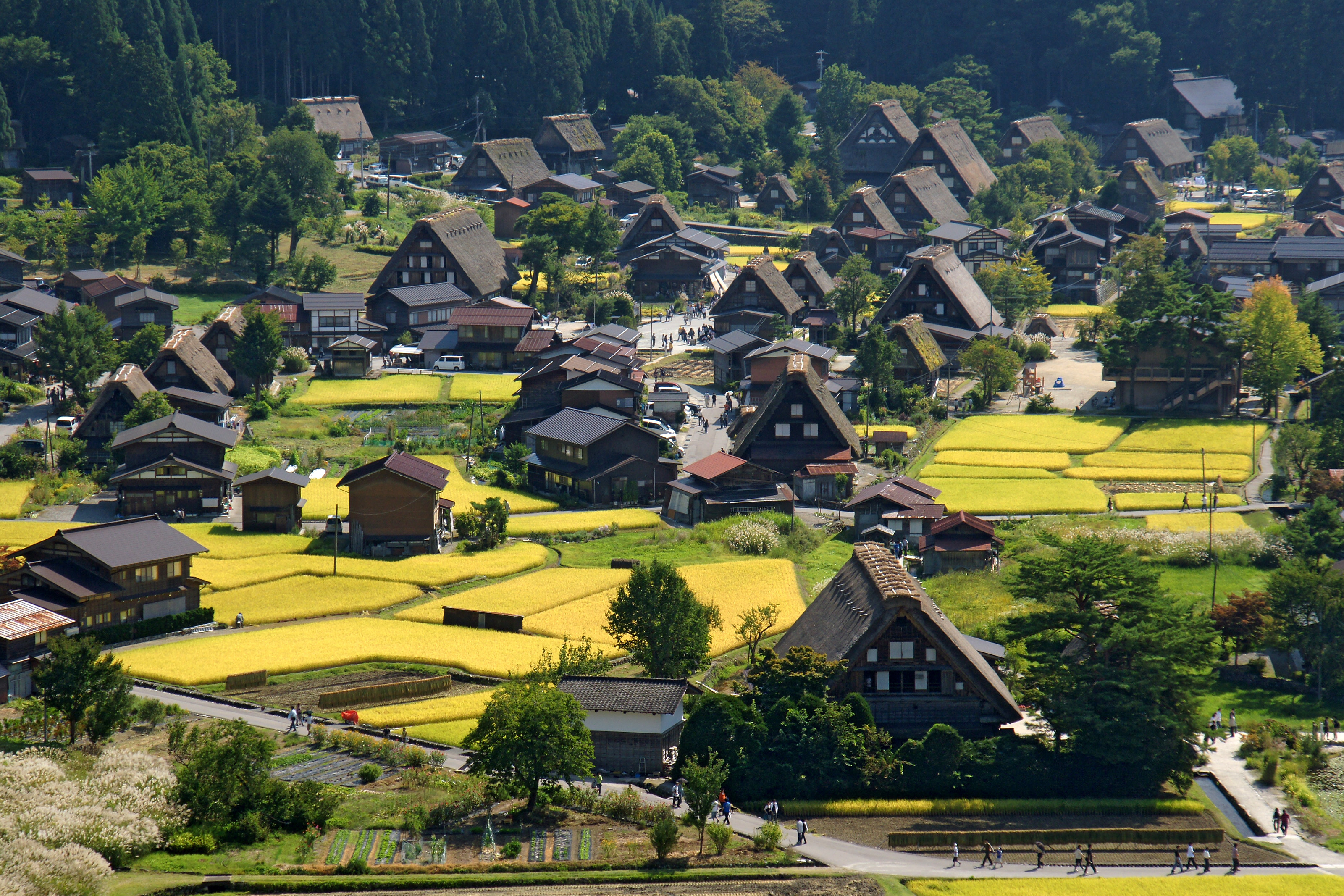Shirakawa-go is a historic village nestled in the mountainous region of Gifu Prefecture, Japan. Famous for its traditional gassho-zukuri farmhouses, a UNESCO World Heritage Site since 1995, the village offers a remarkable glimpse into Japan's rural past. These unique architectural structures are designed with steep thatched roofs resembling hands in prayer (gassho), perfect for shedding heavy snowfalls typical of the area.
Historically, Shirakawa-go has been an isolated community, allowing it to preserve its unique culture and traditions. The farmhouses, some of which are over 250 years old, were primarily home to extended families engaged in silk farming and subsistence agriculture. The area's historical significance is rooted in its ability to showcase traditional Japanese life and adaptive architecture.
Culturally, Shirakawa-go is a testament to community spirit and resilience. The design of the houses is a product of cooperative labor, where villagers would come together to build and maintain these large structures. This cooperative spirit is still present today as the community works together to preserve its heritage.
Notable landmarks include the Wada House, the largest gassho-zukuri farmhouse that is also open to the public. The Shirakawa Hachiman Shrine is a prime example of local spiritual life and a gathering place for festivals.
Situated in the Shogawa River Valley, the village experiences a humid continental climate, characterized by warm humid summers and heavy snowfall in winter, which enhance the picturesque quality of the snow-covered rooftops.
One of the most famous events is the Shirakawa-go Light-Up event, held during select weekends in January and February, when the entire village is illuminated in the evening, creating a magical winter wonderland.
An interesting trivia about Shirakawa-go is that the gassho-zukuri style was developed specifically for regions with heavy snow, showcasing a unique adaptation to local environmental conditions.
 663highland , CC BY 2.5, via Wikimedia Commons
663highland , CC BY 2.5, via Wikimedia CommonsJapanAsia
Nearby Places
Kanazawa(41 km)
Preserved Edo-period districts offering a glimpse into Japan's historical and cultural past.Kyoto(172 km)
Historic city with ancient temples, traditional tea houses, and beautiful seasonal landscapes.Mount Fuji(192 km)
Iconic volcanic mountain and cultural symbolNara(200 km)
First permanent capital with giant Buddha.Nikko(248 km)
Ornate Shinto shrine complex set in a breathtaking natural and historical landscape.Himeji Castle(254 km)
Japan's finest surviving feudal castle, a stunning blend of historical significance and architectural beauty.Tokyo(265 km)
Vibrant capital city known for its blend of traditional temples and modern skyscrapers.Log in to write a review.
Sustainable Travel Tips
Plan Mindfully
- Choose direct flights when possible
- Travel during off-peak seasons
- Pack light and bring reusables
- Prefer eco-friendly accommodations
At Your Destination
- Use public transport or walk
- Support local businesses
- Respect wildlife and habitats
- Choose activities with minimal impact
Daily Habits
- Reuse hotel towels
- Take shorter showers
- Turn off lights/AC when out
- Carry a reusable water bottle
